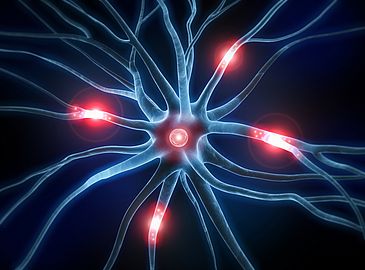Brain stem infarcts, paraplagia and amyotrophic lateral sclerosis: Serious illnesses affecting the central nervous system that can render patients completely helpless. Some patients are no longer able to control parts of their body, making any form of communication quite impossible. Researchers all over the world have been working for years on the development of so-called brain computer interfaces (BCIs). It is hoped that these systems will be able to transfer people’s thoughts via mental activity into control signals for computers, making it possible for patients to communicate with their family, care workers and their environment in general. Recently, researchers at the University of Bremen’s Center for Cognitive Sciences achieved a major breakthrough along the way to developing a workable brain computer interface. Following many years of experiments with macaques, they have been able to prove that our sense of sight is capable of constructing a reliable and astonishingly fast brain computer interface. In its first April 2013 issue, the internationally renowned Journal of Neuroscience published an article on the research findings produced by the Bremen scientists led by Andreas Kreiter and Klaus Pawelzik.
Avenues of research on brain computer interfaces
Current research pursues two different approaches in respect of brain computer interfaces: Non-invasive and invasive systems. Non-invasive systems measure the brain activity outside the head. The disadvantage of this approach is that the information content of the measured brain activity is rather limited. Invasive systems probe more deeply into the origin of the electrical signals given off by the brain and subsequently enable a more precise measurement of the activity pattern, containing significantly more information. Initial experiments involve electrodes being implanted directly into the brains of rhesus monkeys and humans. Typically, the electrodes are implanted into the motor cortex. What other options are available when this approach is not deemed suitable?
From seeing to the mentally controlled computer
The Center for Cognitive Sciences at the University of Bremen has developed a new alternative. The researchers are investigating whether it is possible to construct a permanent brain computer interface with the help of surface electrodes placed on the head and above the sight system. This involves macaques being trained to focus their visual attention onto two fixed objects without moving their eyes at all in the process. With surface electrodes placed over the brain, it was possible to measure the animals’ brain activity over a long period of years without causing them any harm. Evaluation of the data collected showed that even a short segment (less than a second) of the measured signals were sufficient to ascertain which of the two objects the animals were focusing on. This provides the scientific evidence that it must be fundamentally possible to transfer electrical signals of visual attention measured on the surface of the brain into clear computer control signals. The research at the University of Bremen, which is funded by the Federal Ministry of Education and Research, has therefore passed an important milestone along the way to producing neuroprosthetics.
In a further step, the brain researchers at the University of Bremen now want to find out how these brain signals can be used to produce text messages or control wheelchairs, for instance.
For more information, please contact:
Universität Bremen
Zentrum für Kognitionswissenschaft
Dr.David Rotermund
Phone: +49 421 218-62003
email: davrotprotect me ?!neuro.uni-bremenprotect me ?!.de
www.jneurosci.org/content/33/14/6001.abstract

